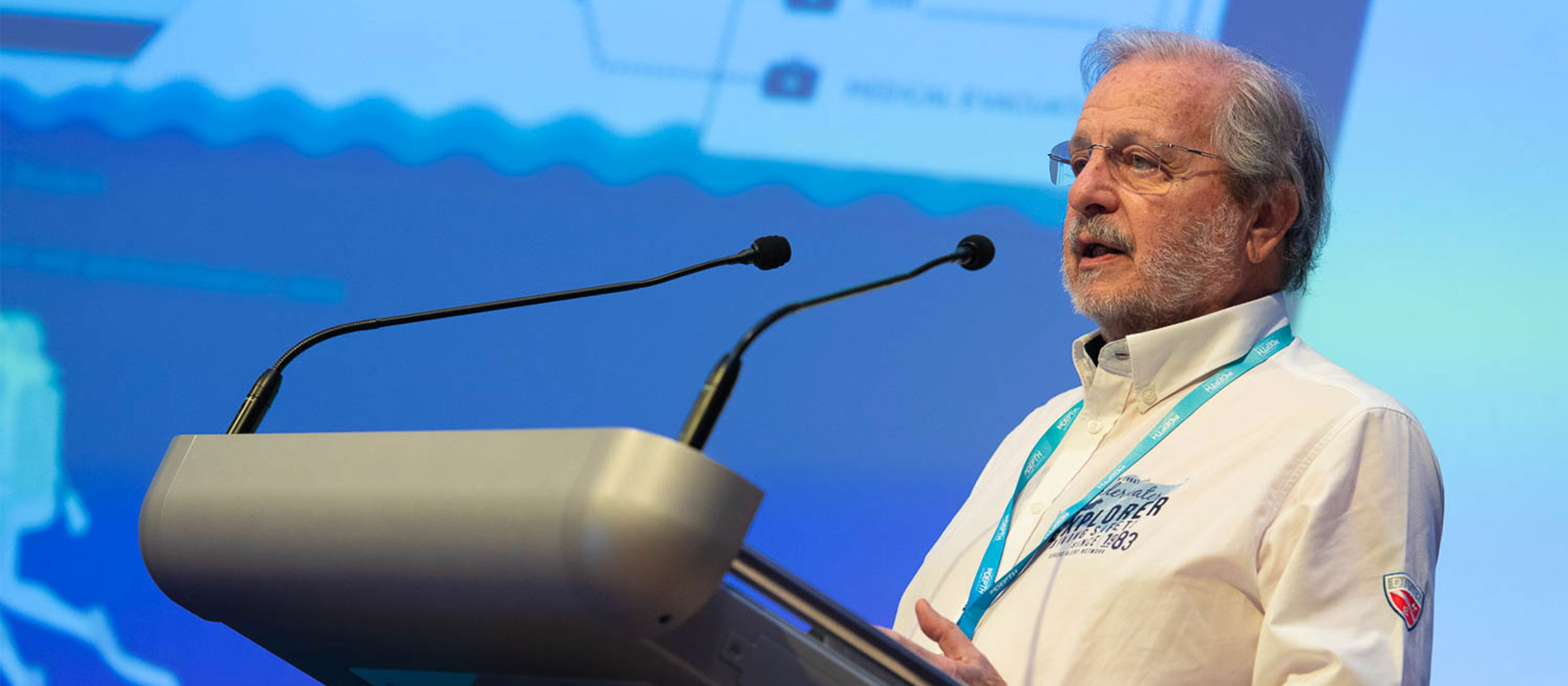Diving inspiration
Insights and Breakthroughs: A Recap of Day Three at Rebreather Forum 4
Day three of Rebreather Forum 4 marked the end of the event, with the conference consensus, a presentation by DAN Europe founder and CEO Prof. Alessandro Marroni, and the keynote address delivered by Richard “Hydrogen Harry” Harris during the evening banquet.
The day kicked off with a talk by Simon Caruana presenting the International School of Diving Safety and Medicine. The ISDSM was launched in 2017 jointly between Malta’s Institute of Tourism Studies and DAN Europe, in collaboration with Malta’s Professional Diving Schools Association (PDSA), reuniting most of Malta’s dive centres. It offers academic education in dive safety, research and medicine. A Bachelor of Science in Diving Safety Management was launched in 2020, and the first students are graduating this year.

The second speaker of the day was Rachel Lance, a biomedical engineer at Duke University, who gave a riveting and entertaining talk about the near future of underwater physiological monitoring. She presented several new technologies that she and other teams are currently developing, ranking them on a scale from “Jimmy” (the dog used used to deliver proof of concept for the ECG in the original experimental setup) via “suitable for research” to the end goal of “purchasable” (represented by Shearwater dive computers).

While the tone of her presentation was humorous, Lance offered detailed and fascinating insights into practical problems of the development process and the ingenuity required to solve them. In her words: “Before you can manufacture something, you need to show that it works. It’s not science if it doesn’t involve dental floss and duct tape.” The technologies themselves were no less exciting. For example, imagine teaching a computer to detect respiratory distress (e.g. from the early stages of hypercapnia) from the sound of a diver’s breathing, and then building a system that is both small and robust enough to be used underwater at high pressure. Lance and her team are among those who expand the possibilities of hyperbaric science by building tools to obtain types of data that aren’t accessible with the means presently available. The products of her work are sure to inspire numerous future research papers.
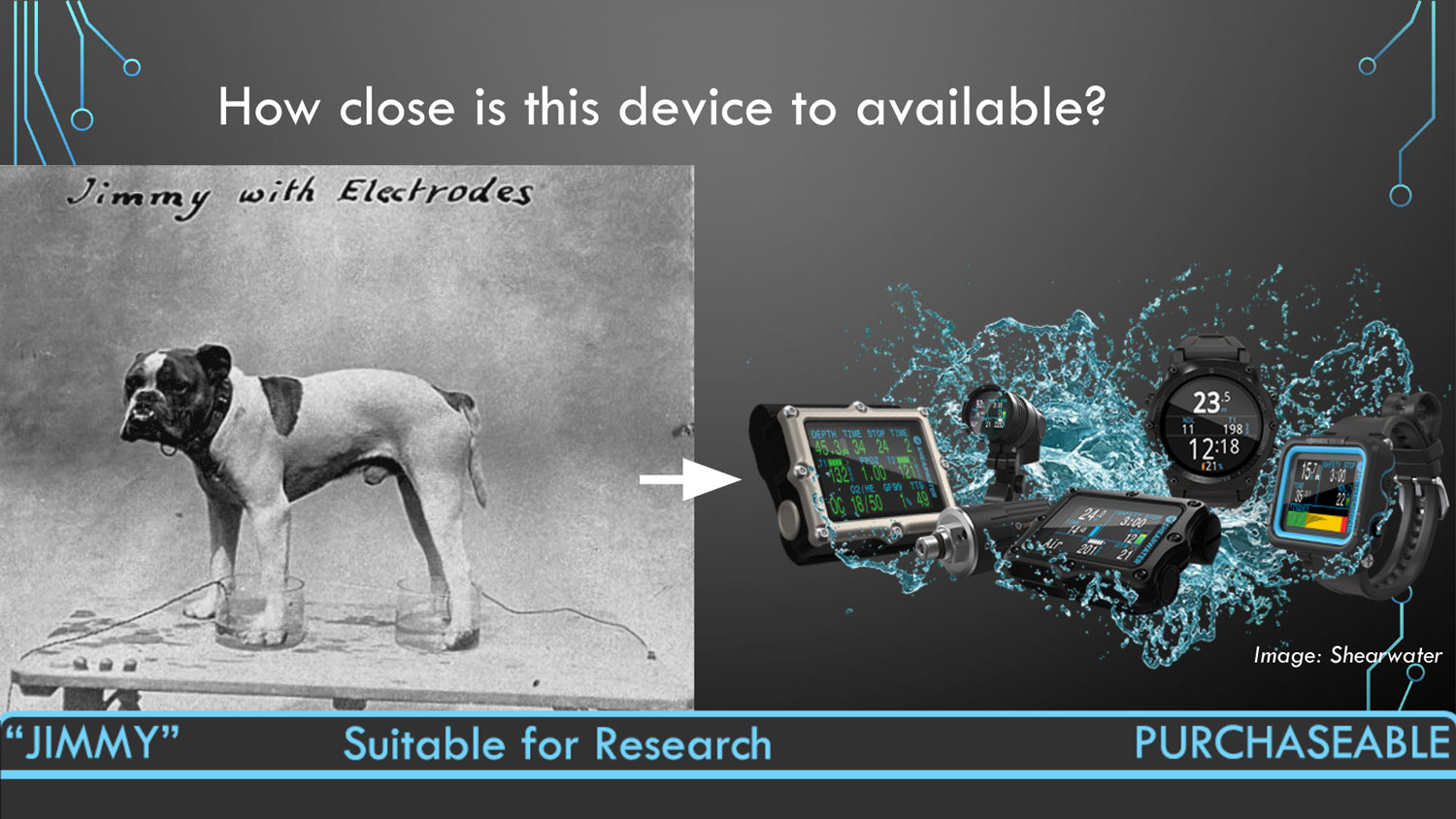
Moving on from the near to the farther future, next up were explorer Phil Short and engineer Kevin Gurr with a talk on “blue sky” technologies – essentially a wishlist for the R&D people and equipment manufacturer representatives in attendance, with an invitation for expert discussion. Items on the list included technologies to help coordinate pre-dive safety checks for large dive teams, better head-up displays, a self-regenerating alternative to traditional CO2 scrubber adsorbent, better full-face masks, and a way to address breathing resistance on very deep dives. The Q&A part of the presentation showed that manufacturers were clearly paying attention.
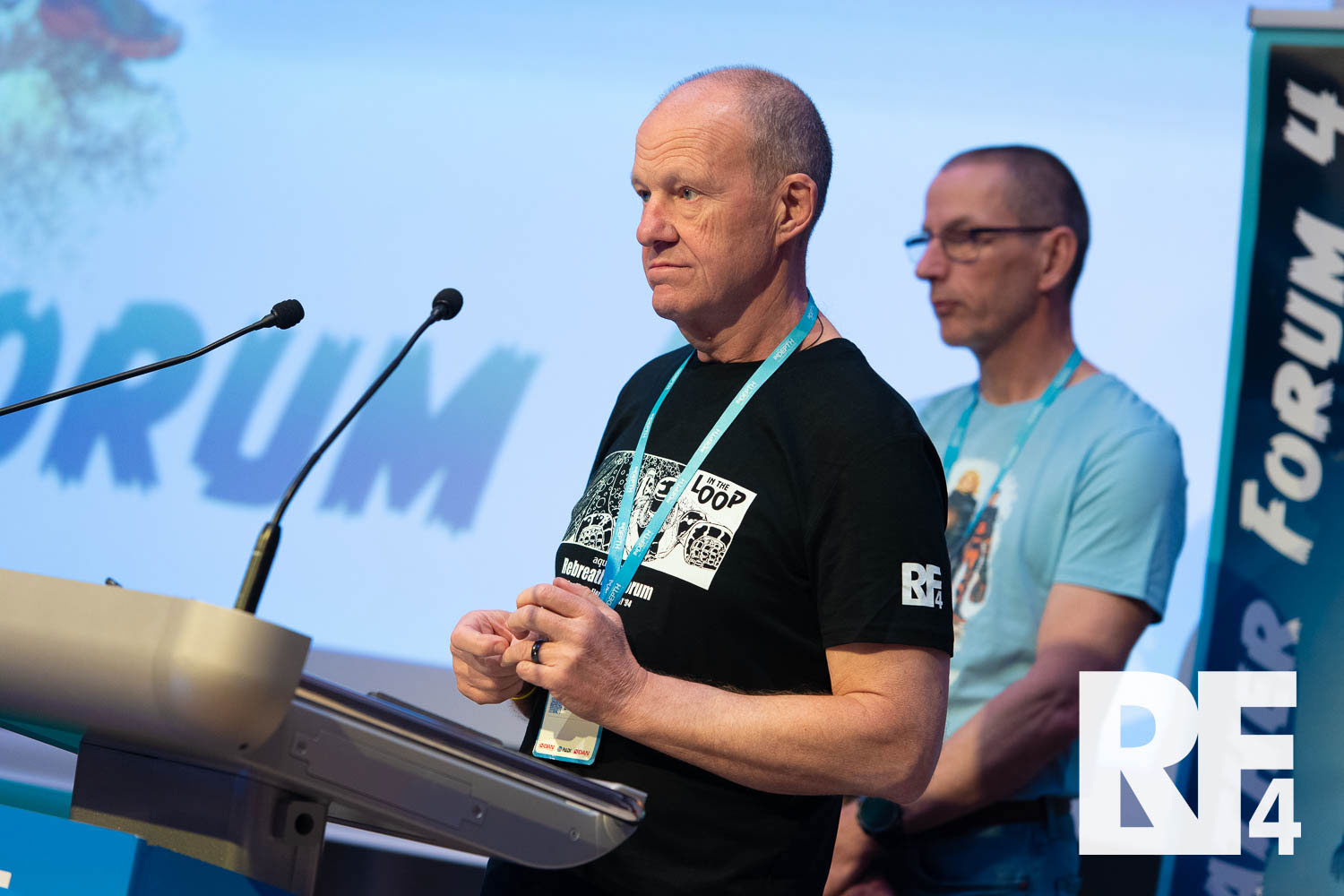
Staying on the subject of diving medicine and technology, the next talk was given by DAN Europe’s CEO and founder Prof. Alessandro Marroni, who presented DANA – a system consisting of wearable underwater-compatible biometric sensors, an ultrasound-based device for transmitting sensor readings to the surface, and technology to transmit this data from remote diving locations to scientists in a university lab far away. The system even includes features to send information back to the divers underwater in the form of text messages. Once released, it will be another valuable addition to the toolbox of hyperbaric researchers.
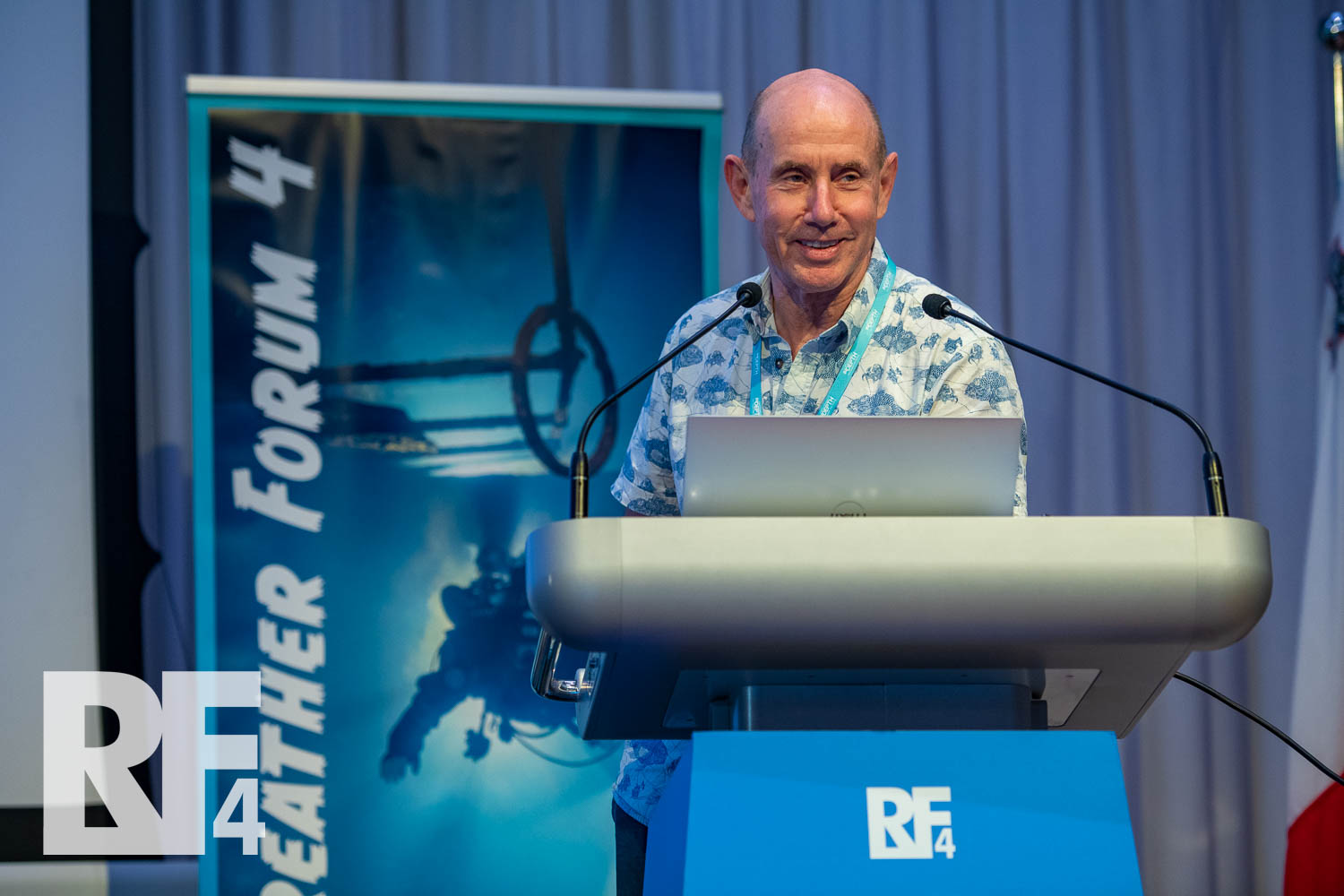
Following Dr. Marroni’s presentation, the remainder of the day was given over to a discussion of thirty consensus recommendations by the forum as a whole for rebreather diving safety, operations, and research of the future. The recommendations were drawn from presentations on all three days of the Forum, and the consensus list will be released together with the proceedings of the conference later this year.
The final highlight however was yet to come: at the festive dinner banquet that night, with an introduction delivered by Jarrod Jablonski of GUE, Richard Harris – the Australian anaesthetist and cave diver who played a crucial role in the Tham Luang cave rescue – took the stage to deliver the keynote address about his recent 230-meter cave dive at the Pearse Resurgence in New Zealand, where he used hydrogen as part of his breathing gas mix for the first time in rebreather diving history. His motto in telling the story of this dive was “N=1” – the fact that it worked once doesn’t tell us much about whether it will work again.
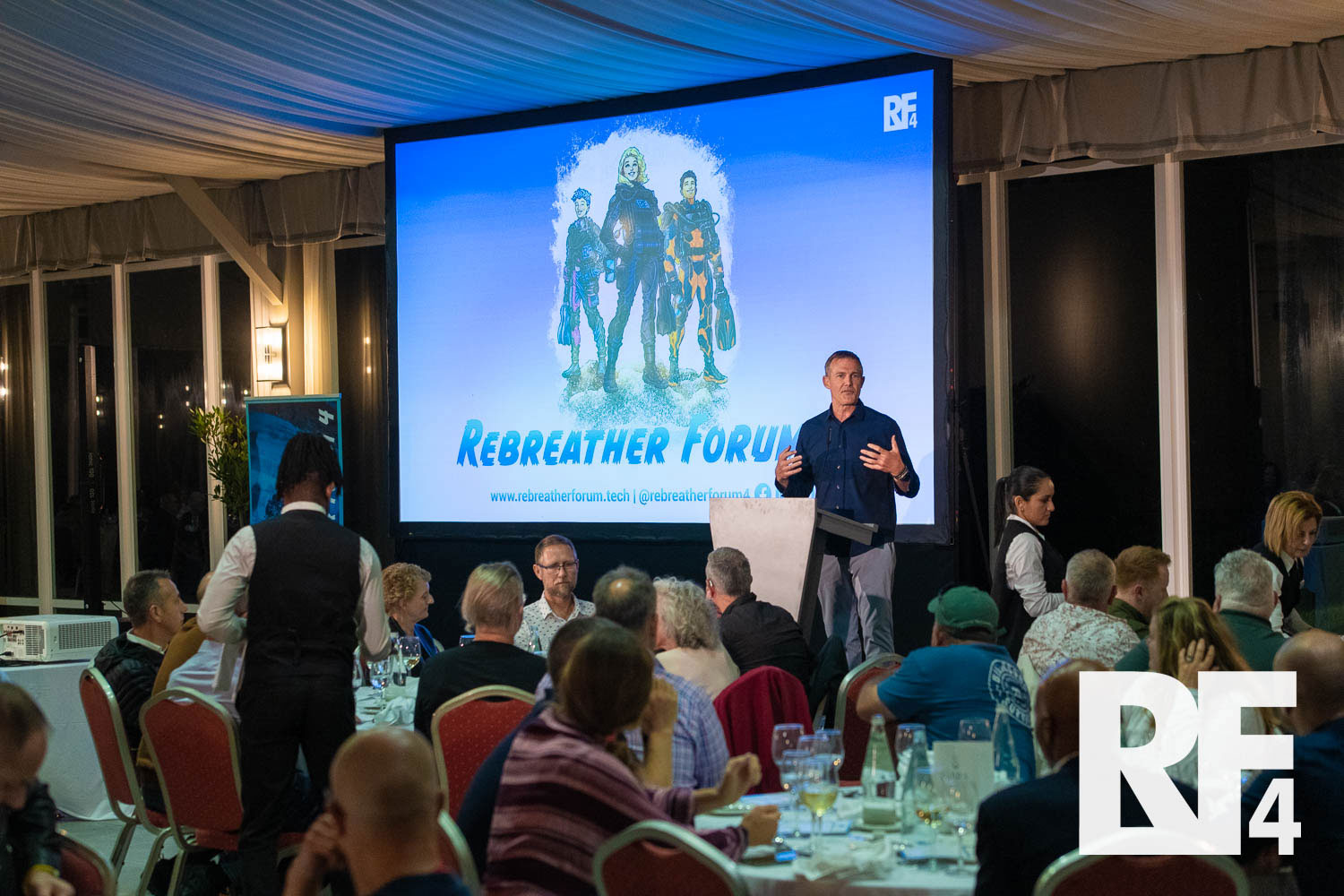
Those who still remember their middle-school chemistry might understand that mixing hydrogen with oxygen is an endeavor that needs to be attempted with a lot of caution even in the lab. Now imagine doing the same in a rebreather. Harris recounted how he did it the first time: put the rebreather in the swimming pool in the basement of his house in New Zealand, hook it up to a bottle of hydrogen, and take the family on a day trip. The house still had a roof when they came back; on to the next step.

There were numerous other considerations: hydrogen is a very light gas, which makes it advantageous in terms of gas density and work of breathing (WOB) at these great depths. However, besides being highly flammable, it is also more narcotic than hydrogen. How this would affect Harris’ performance at 230 meters of depth was anybody’s guess. Then, how about high-pressure nervous syndrome (HPNS), inner-ear DCS, respiratory cold stress, decompression from hydrogen, and bailout? One had to listen to the whole of Harris’s speech to get an idea of the sheer audacity of what he did.
As a whole, Rebreather Forum 4 was an impressive success whose effects will influence the developments of rebreather and technical diving for years to come. None of this would have been possible without the tireless effort of the main organiser, Michael Menduno, and his team. Michael has been the unofficial chronicler of the tech diving community for more than thirty years, the one who got the ball rolling by organising the first rebreather forum back in 1994.
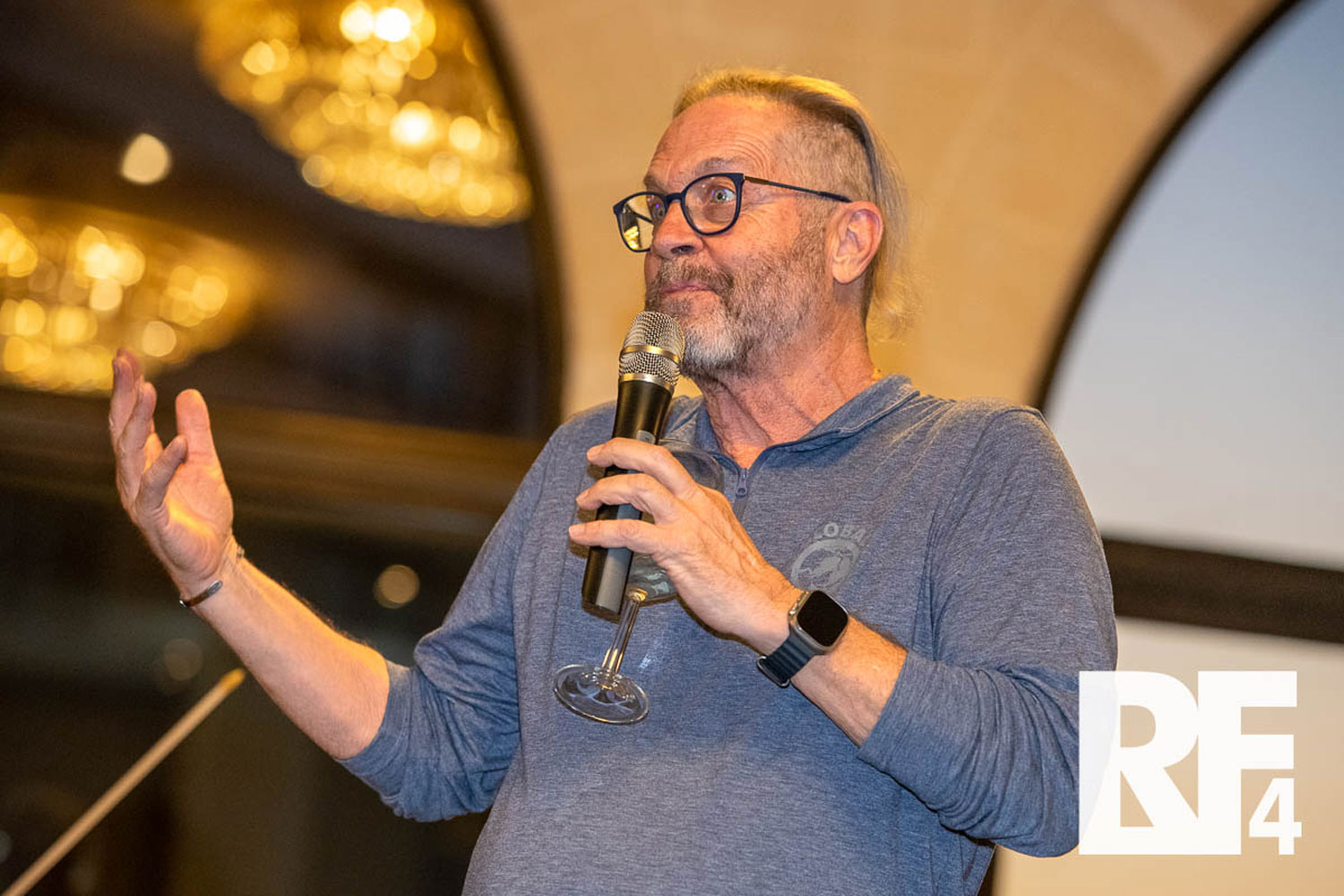
However, not only the scientists, developers, manufacturers, explorers, instructors and other experts benefited from the event. As a close to this series of blog posts, I would like to quote three of Timmy Gambin’s archeology students who worked overtime to make the event go smoothly.
Destin Allen: “I’m really more of an archaeologist than a diver, but it’s been great to learn more about the role of diving in our field. I want to get more into diving as part of my future career.”
Matthew Cummings: “I’ve only got about 50 dives recreationally, but this has been fascinating. I’m very interested in dive safety, and there has been so much to learn here. And let’s face it, the future of underwater archaeology will involve more deep diving, since most of the shallow sites are pretty much picked clean. Deep diving these days seems to mean rebreather diving, so that’s what I’m going to do.”

Anika Sprague: “I absolutely want to get more into diving as part of my work as an archaeologist. But there’s another thing that struck me about this conference: Everything is on schedule! These people are so much better at time keeping than regular academics! Must be all the tech diving…”
The proceedings of Rebreather Forum 4 will probably be released in October. Until then, safe diving to all of you.
About the author
Tim Blömeke teaches technical and recreational diving in Taiwan and the Philippines. He is also a freelance writer and translator, as well as a member of the editorial team of Alert Diver. For questions, comments, and inquiries, you can contact him via his blog page or on Instagram.


